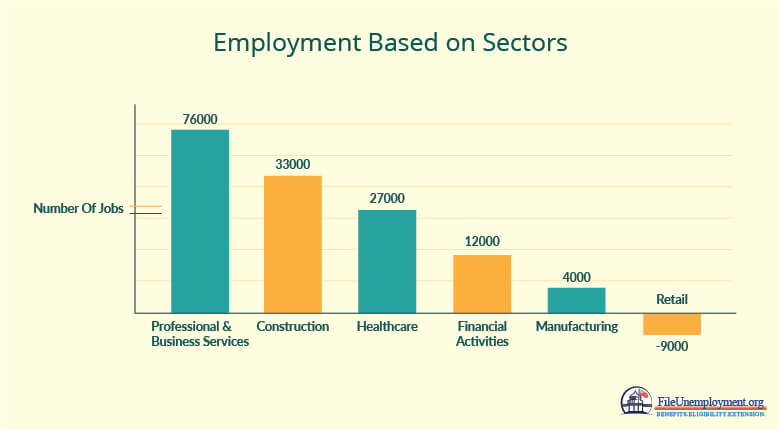As per the April employment situation report, the unemployment rate is the lowest in 50 years at 3.6 percent while nonfarm payroll employment increased by 263,000. The April employment situation report further stated that major job gains were in professional and business services, construction, health care, and social assistance.
Household Survey Data
This is the lowest unemployment rate since 1969. The rate declined by 0.2 percentage point to 3.6 percent in April. Also, there was a decrease of 387,000 unemployed persons and this reduced to 5.8 million overall.
In the major worker groups, the unemployment rates declined:
- Adult Men – 3.4 percent
- Adult Women – 3.1 percent
- Whites – 3.1 percent
- Asians – 2.2 percent
- Hispanics – 4.2 percent
- Teenagers – 13 percent
- Blacks – 6.7 percent
The number of job losers and people that completed temporary jobs declined by 186,000 over the month to 2.7 million. While at the same time, the number of people unemployed for less than 5 weeks declined by 222,000 to 1.9 million. Similarly, the long-term unemployed was little changed at 1.2 million in April and accounted for 21.1 percent of the unemployed.
The labor force participation rate was unchanged from a year earlier. It declined by 0.2 percentage point to 62.8 percent in the month of April. Also, the employment-population ratio has remained unchanged at 60.6 percent in April and this has been either 60.6 percent to 60.7 since October 2018.
For economic reasons, there were some people that worked part-time and this changed a little at 4.7 million in April. These were mostly individuals that preferred full-time employment and were working part-time because their hours had been reduced or unable to find full-time work.
With regard to the unemployment situation in April, 1.4 million people were marginally attached to the labor force in April. These individuals were not in the labor force and were looking for work for 12 months. There were 454,000 discouraged workers in April which was about the same as last year. Discouraged workers are people that are not currently looking for work because they feel that there are no jobs available for them. The remaining 963,000 attached to the labor force had not searched for work as they had school attendance and family responsibilities to tend to.
Establishment Survey Data
In the employment situation, the nonfarm payroll employment had increased by 263,000 in April as compared to the monthly gain of 213,000 over the last 12 months. The major job gainers were in professional and business services, construction, health care, and social assistance.
There were 76,000 jobs in the professional and business services category. Administrative and support services increased by 53,000 and 14,000 in computer systems design and related services. In the last 12 months, professional and business services added 535,000 jobs.
Construction employment grew by 33,000 and this saw gains in the nonresidential specialty trade contractors by 22,000 and heavy and civil engineering construction by 10,000. The construction added 256,000 jobs over the past 12 months.
In health care, employment grew by 27,000 and 404,000 over the past 12 months. The ambulatory health care services increased by 17,000, hospitals by 8,000 and community care facilities for the elderly at 7,000. Also, social assistance added 26,000 jobs over the month.
Employment for financial activities continued to trend up by 12,000. The industry has added 110,000 jobs over the last 12 months with almost three-fourths of the growth seen in rental, leasing and real estate.
There was little change in manufacturing for a third month in succession and it increased by 4000 in April. 12 months prior to February, this industry had added 22,000 jobs per month.
Retail employment was down by 12,000 and 9,000 job losses were in merchandise stores. But at this time motor vehicle and parts dealers added 8,000 jobs.
Other major industries that showed little change in April were mining, wholesale trade, transportation and warehousing, information, leisure and hospitality, and government.
Revisions
The total nonfarm payroll employment was changed from 33,000 to 56,000 for February while March was changed from 196,000 to 189,000. Based on these revisions, employment increased by 16,000 more than what was previously reported.
